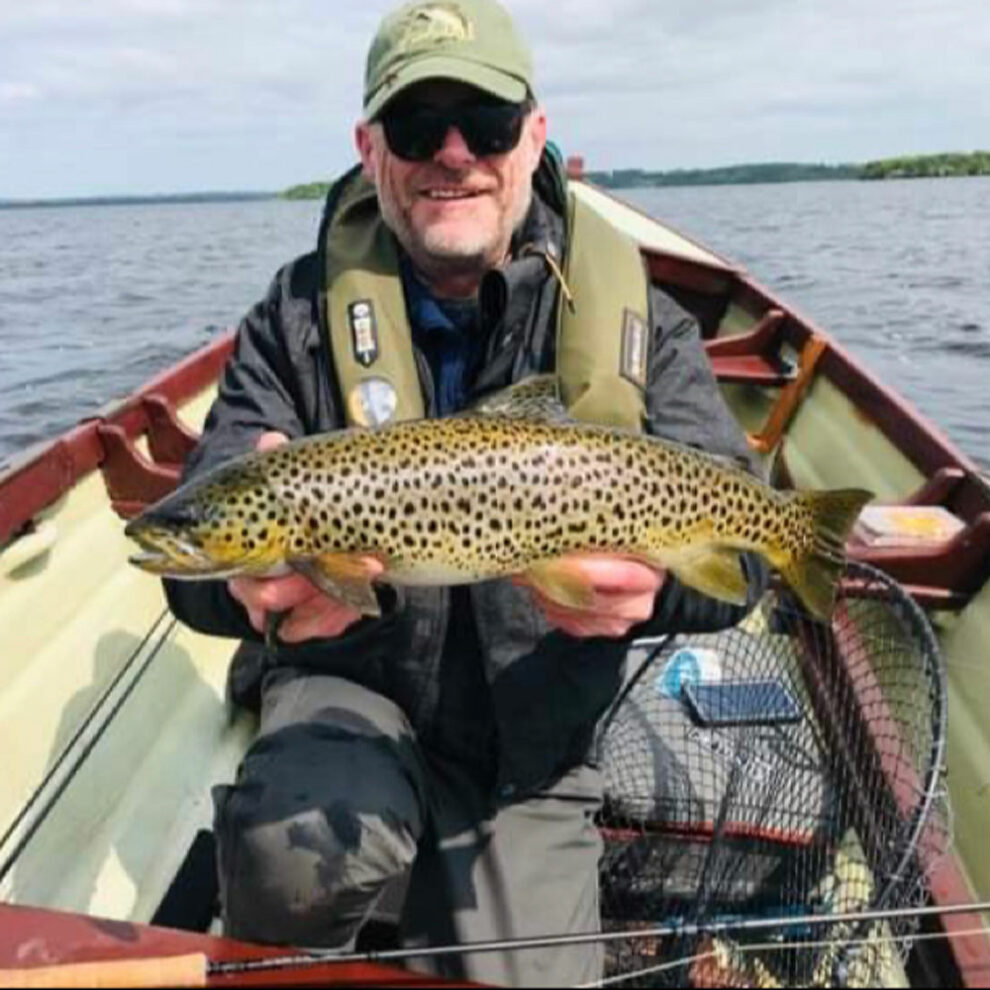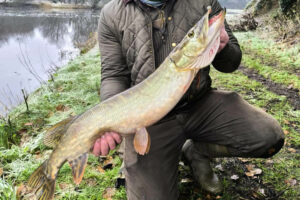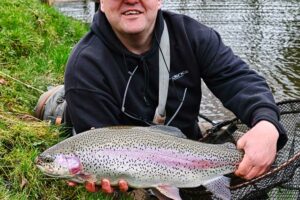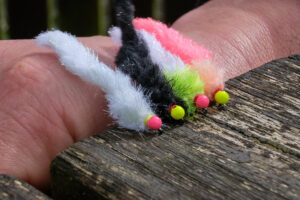“The FLY is up!” a call which hails almost every fly angler to arms in Ireland. For the angler and possibly the trout, this time of year is undoubtedly one of the high points of the game fishing season.
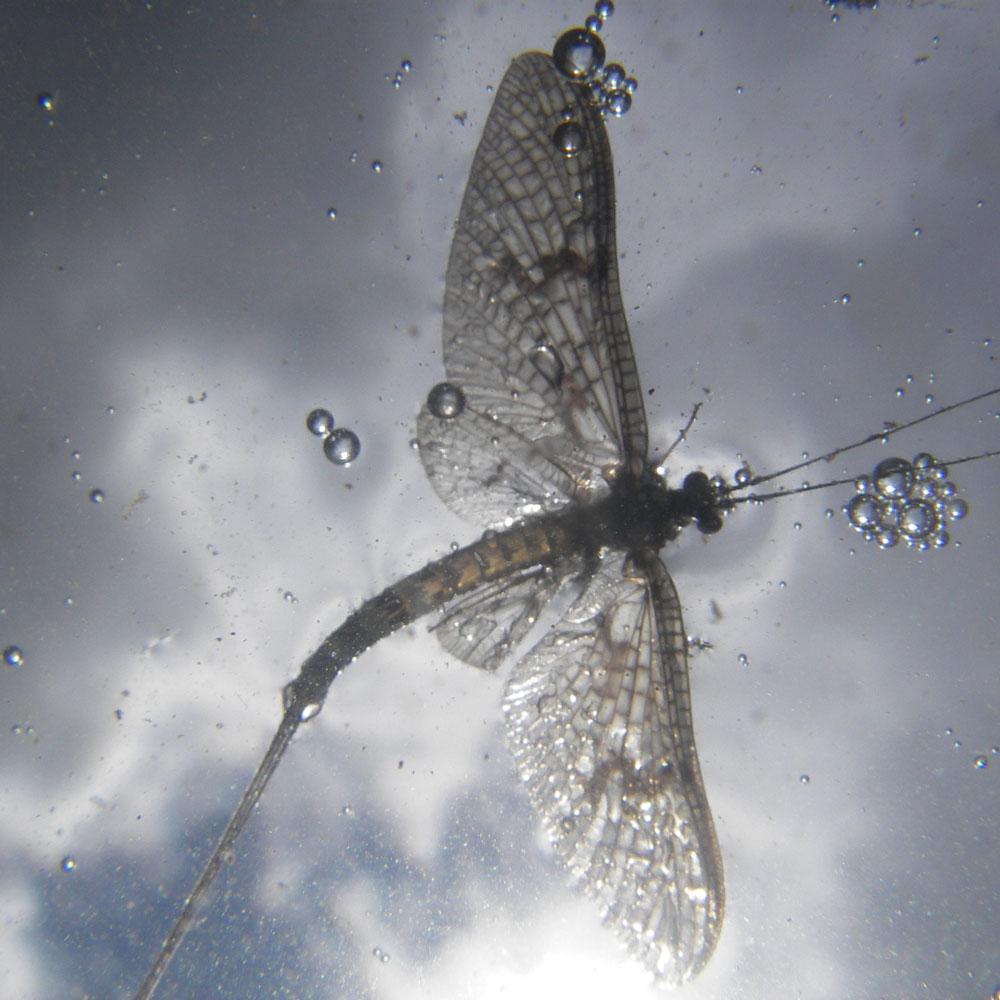
The Magic of Mayfly
This aquatic insect has been the name of many bars, restaurants, and hotels. The topic of hordes of books, it’s probably the only insect that stirs many of us to make the yearly pilgrimage to one of the Emerald Isle’s great limestone loughs. World-famous loughs like Erne, Corrib, Mask, Conn, Sheelin, Derg, and Melvin, to name just a few.
Mayflies can hatch from late spring until autumn, so always carry a few imitations in your fly box. However, main hatches are typically in late May and early June. The name does not truly coincide with the month because they were named before Pope Gregory XIII changed the calendar in 1582, and at that time, May was a couple of weeks later in the year.
Many of you may have heard the old saying “the duffer’s fortnight”, which has always seemed very strange to me. This is a magical two weeks when fly fishers can make the most of the trout’s gluttony. However, this is something that I have never heard any angler say on a wild, vast Irish Lough. I imagine this adage comes from England’s chalk streams, where the fishing is arguably a little easier during the Mayfly season. I must admit I have only been lucky enough to fish a couple of times on English chalk streams. Once was a very memorable occasion as a guest on the famous River Test. Never during a mayfly hatch, though, maybe someday. Like all fly fishing, I am certain it will come with its own trials.
I love river fishing, and in my part of the world, it is my weekly sport. However, Mayfly fishing on Irish loughs can be a different ball game and, on occasion, incredibly challenging. Like most fly fishing success, it is often dependent on conditions, judgement, guile and, dare I say it, at times, an element of luck.
My last four-day trip to Lough Sheelin was typical, as few fish were boated out of ten well-experienced anglers. That said, we had far from easy conditions. It is never about the numbers of fish on Sheelin, which must be remembered when we are on many of these big, majestic waters. I have fished Sheelin at this time of the year for over thirty years and have always loved it; a place that holds so many memories of great characters and fantastic trout caught and lost. This said, it is a place where you will have many blank days, as all Sheelin anglers will tell you. You do have to, at times, work hard to catch your fish. Many find it magical, and others find it frustrating, depending on your experiences. As someone once said, it would soon become tedious if it were easy.
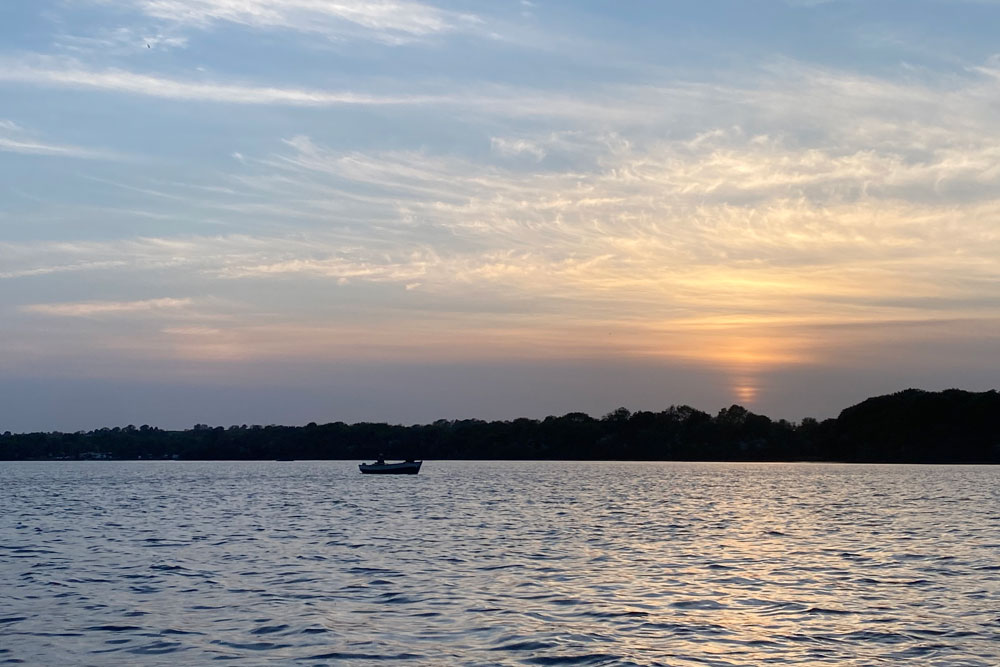
I know some anglers hunt a particular trout as they know the areas that an individual fish patrols. One great angler I know was stalking a fish for many evenings, and maybe he still is! As the old sea charts say, “There be monsters”, and a few are caught yearly. I heard of two fish lately of around 9lb being landed, and there is bigger. I adore the appearance of these stunning deep muscular fish with their incredible markings. They are simply a joy to see, and I feel quite privileged when I fool one of them into taking my fly.
Sheelin, for me and many of my friends, is about landing that special trout. Like many of Ireland’s great loughs, it holds wonderful-looking specimens. We also must remember days on the Lough are not just about fishing, and it is very much about being in a vast wild place with nature all around. Enjoying a long lunch on an Island with other like-minded people while the mayfly dance all around, and just sitting in a boat with good company and watching the sunset. There are also wild days when you only want to put your feet back on dry land, and most lough anglers will have a rough day story. I know of a few for a different article. For me is also about fishing in wonderful wild places; as Tomas Garrigue Masaryk said, “Wherever the trout are, it’s beautiful.”
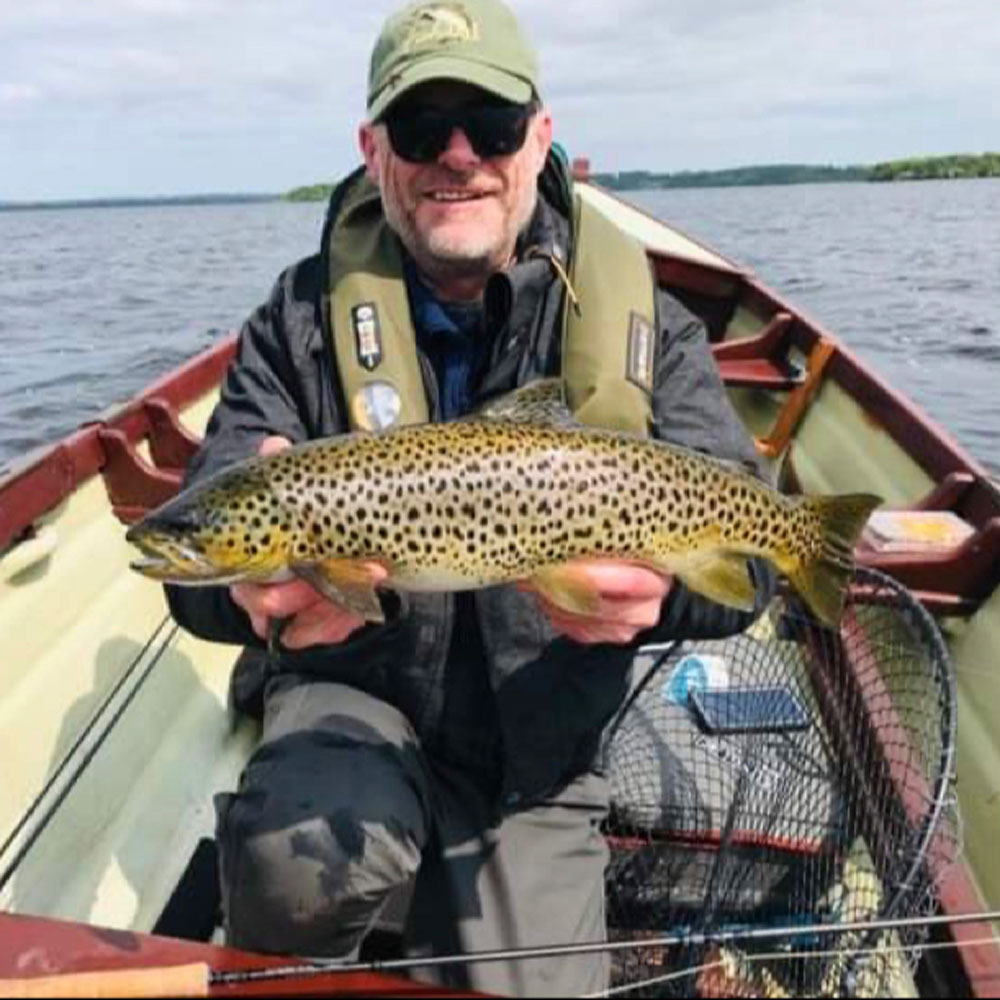
Mayfly Fishing Tactics
When the fly starts hatching, the trout normally take a few days to switch on to the dry fly. They begin feeding on the mayfly in all its life cycles, firstly, the nymphs. Later they take the emerging fly, the hatched dun or “green drakes” as they are called and then the spinner or spent (gnat), which is normally in the evenings and, to many, can be the cream of the fishing.
Nymphs
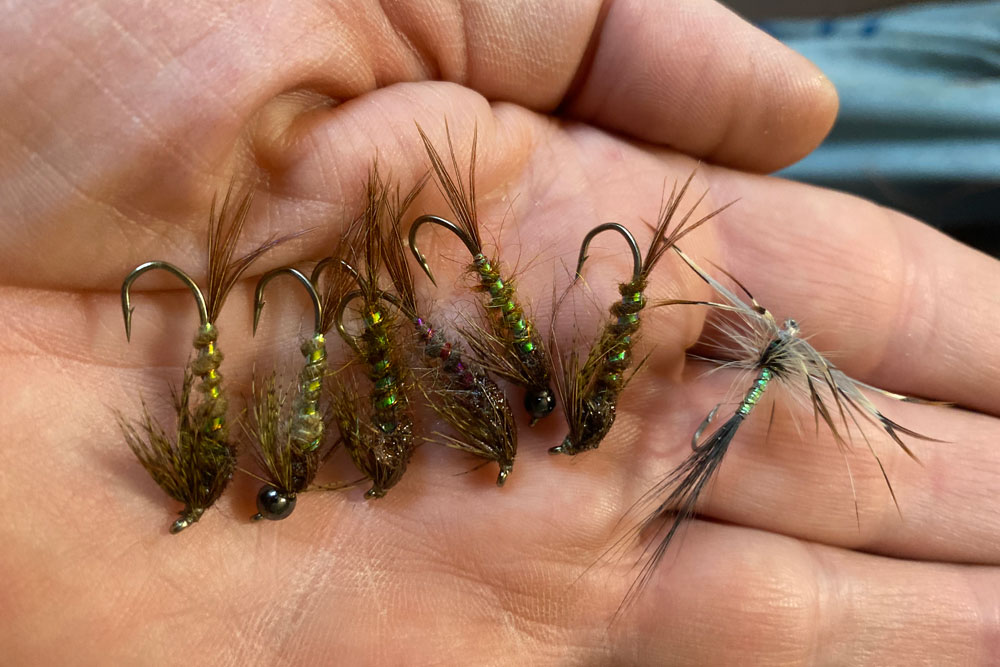
Mayfly nymphs live longer than adults. They burrow into silt or sand and filter organic matter from the water. They grow constantly. Biologists call these stages between moults an instar.
Nymph fishing has been done a lot on lakes over the years and is comparable to buzzer fishing. You want a light or not too strong a wind as you want to fish quite slowly. A slow retrieve works best, so you do not want the boat travelling too fast on the drift or at all, though it is always nice to be moving.
I normally fish a leader 15’ to 18’ in length with two nymphs, the heaviest on the point. This great tactic can be fantastic fishing before the main hatch starts. I even know one fortunate angler, Bill Chapman, who had two fine Sheelin trout on one cast while nymphing this year. This may not be rare in stocked fisheries and has happened to me a lot while river fishing, though never on the loughs. The best patterns are long shanked size 10s and 8s hares ear type patterns like the ones in the picture that I dressed.
Wet Fly
I relish fishing for trout, salmon, grayling, and sea trout, and if it’s wild, I love fishing for it.
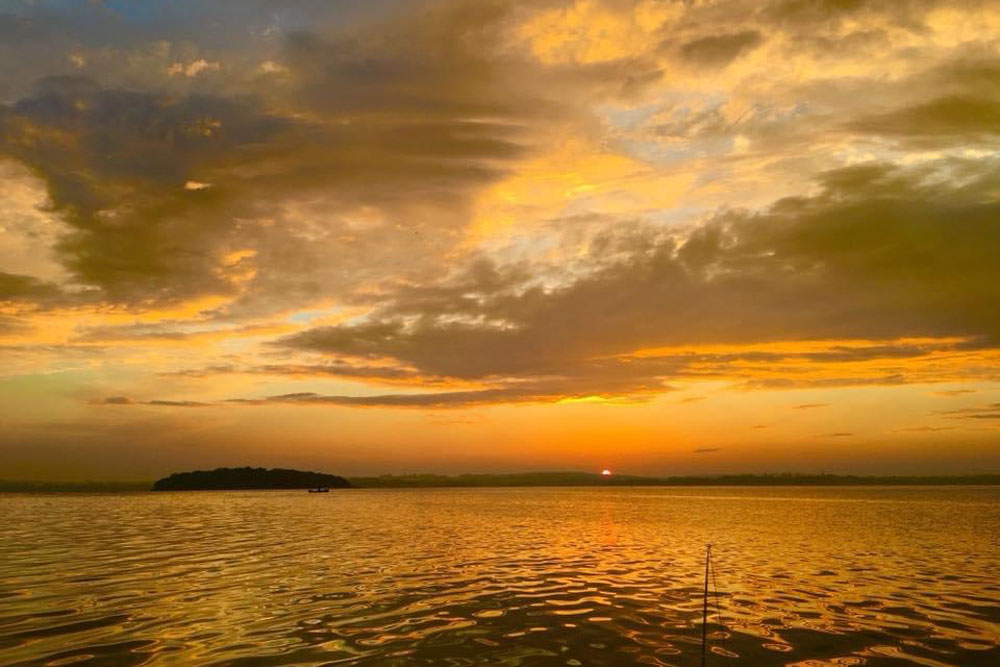
They all come with their challenges. However, I sometimes find Lough fishing the most challenging of all my fly fishing. It is hard to understand what it takes if you have not had a day’s wet fly fishing on a big lough in a wave. You are constantly casting and working your flies and then recasting while stripping back the line at speed. Thousands of casts can be made in a day looking for a fish. It is extremely demanding fishing. Not only on your body but on your equipment, which can sometimes be hard. If the conditions are not good and the fish are not looking up.
It can be amazing and exhilarating when you hit it right and find wild trout feeding on mayfly duns in a wave. In Kingsmill Moore’s terrific book “A Man May Fish”, he refers to an angler who has an eye like a “Travelling Rat”, and sometimes that is just what you need as we continuously scan the waves for the movement of fish.
Wind conditions always play a crucial role in choosing where to fish. Watch the direction the flies are being blown. If you get a lot of green fly or duns, follow them to a shoreline, and you will have a good chance of a fish or two. Traditional wet fly fishing needs a long yet, importantly, because of the continual casting, light, well-balanced fly rod. The Cadence CSM 11’ #6 or the CSM 10’ #6 are perfect. I designed the CSM 11’ #6 for this type of boat fishing about three seasons ago, and the results have been fantastic. The rod has performed well and landed many large fish on the loughs.
This popular method involves fly fishing from a drifting boat covering the water in front of you in a fan shape as you move along the waves, which is a brilliant tactic. Especially when trout are in a wave feeding on May dun as you can target fish, normally, the fish will take on the first two pulls, though they can sometimes follow your flies and hit you as you lift or hang, which can be called on the dabble. This is an important tactic and why the long rod is used, as it excels in this type of fishing. You need the length to control your flies away from the boat.
One tip is to make a few leaders up the evening before you go out. Nothing is more frustrating than getting into a tangle, something we all do occasionally. Trying to make a 3-fly cast in a boat on a windy day isn’t a pleasant job, so I always make a few as backup and have them spooled up and ready to go. My leader is normally 15 to 20 feet long with a point fly and two droppers, evenly spaced, so a three fly cast. I know traditionally, some anglers that do fish four flies and others that fish two, perhaps to get fewer tangles, but three patterns is the most common leader set-up.
Fly Lines wise, I like my flies fishing just subsurface when I am pulling flies, and I have found over the years, sink tip lines and intermediates normally hook more fish than full floaters when fishing wets. On a fast retrieve, you can search the top layers of the water, and on a long leader and long rod, you can still make your top dropper fly dance on the waves.
Fly patterns to go for are wet mays like gosling types, Kingsmill Moore’s Golden Olive Bumble, and the ever-dependable green dabblers, all will take fish.
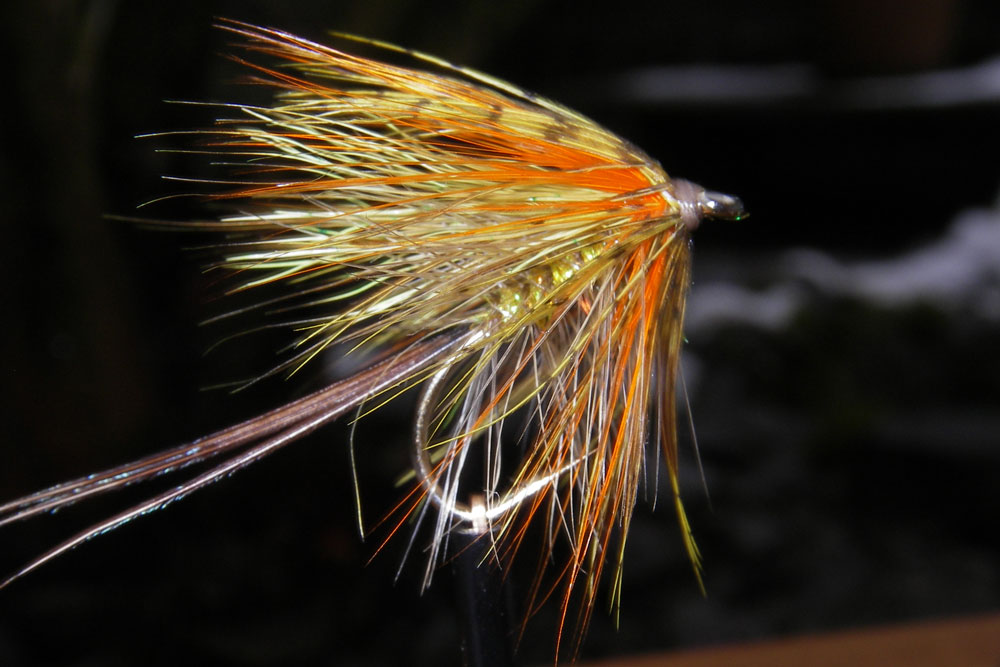
Dry Fly
For many anglers, this is the best fishing, and it is certainly my favourite type of fly fishing. The trout can be taken off the surface using imitation Mayflies when they are hatching or returning to the water to lay their eggs and die. This is when most of us trout bums dream of when big trout start feeding in the evenings on the spent or black gnat as it is called here.
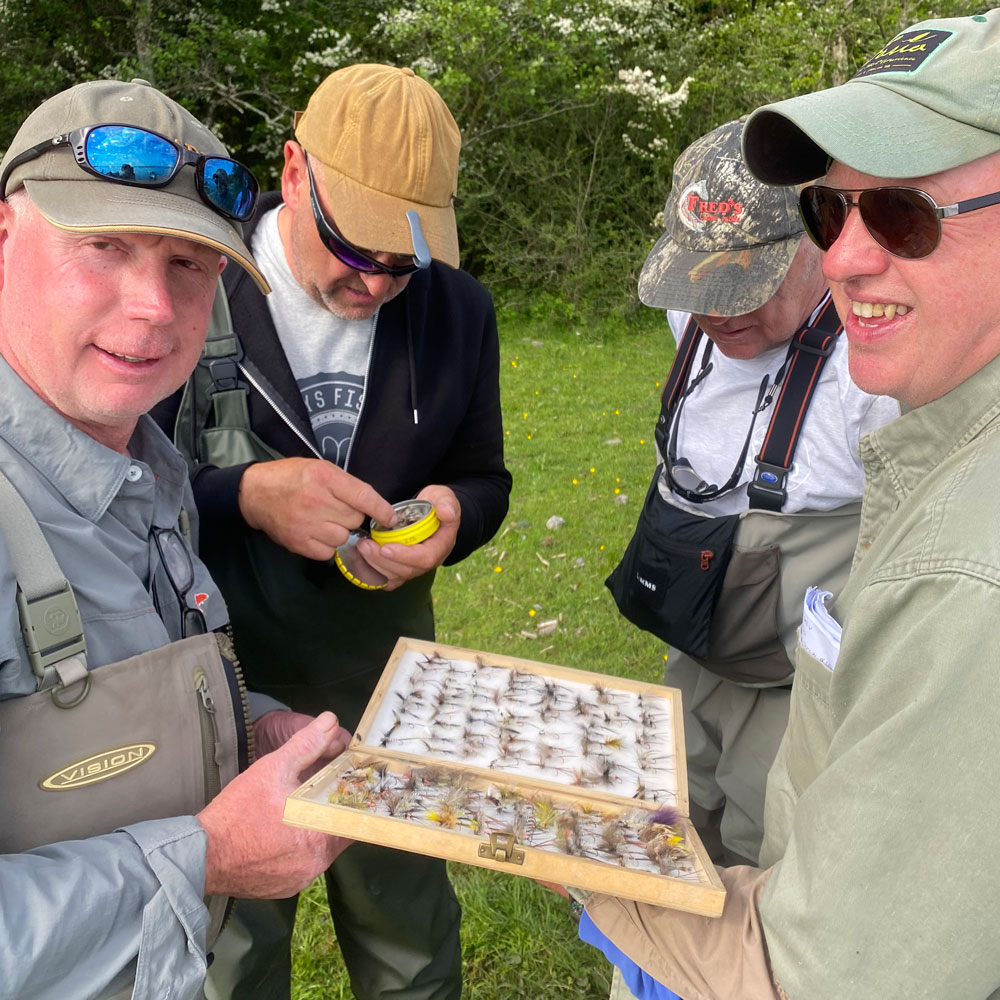
My perfect set-up for this type of fishing would be the Cadence CSM 10’ #5 for calmer days and the CSM 9’ 6” #6 for windier days, paired with a Cadence CSM floating line and a tapered leader. Currently, I am using a Varivas 12’ leader. I attach an O ring and about 5’ of leader material with normally a two-fly setup. One is normally a slightly heavier dressed pattern which is on the dropper a pattern like a Grey Wulff. This is used for a spotter fly and will help in certain lights when it can be hard to see your flies. I always put a spent pattern on the point, which is the fly most of my fish seem to take, even at times during the day when no spent are out.
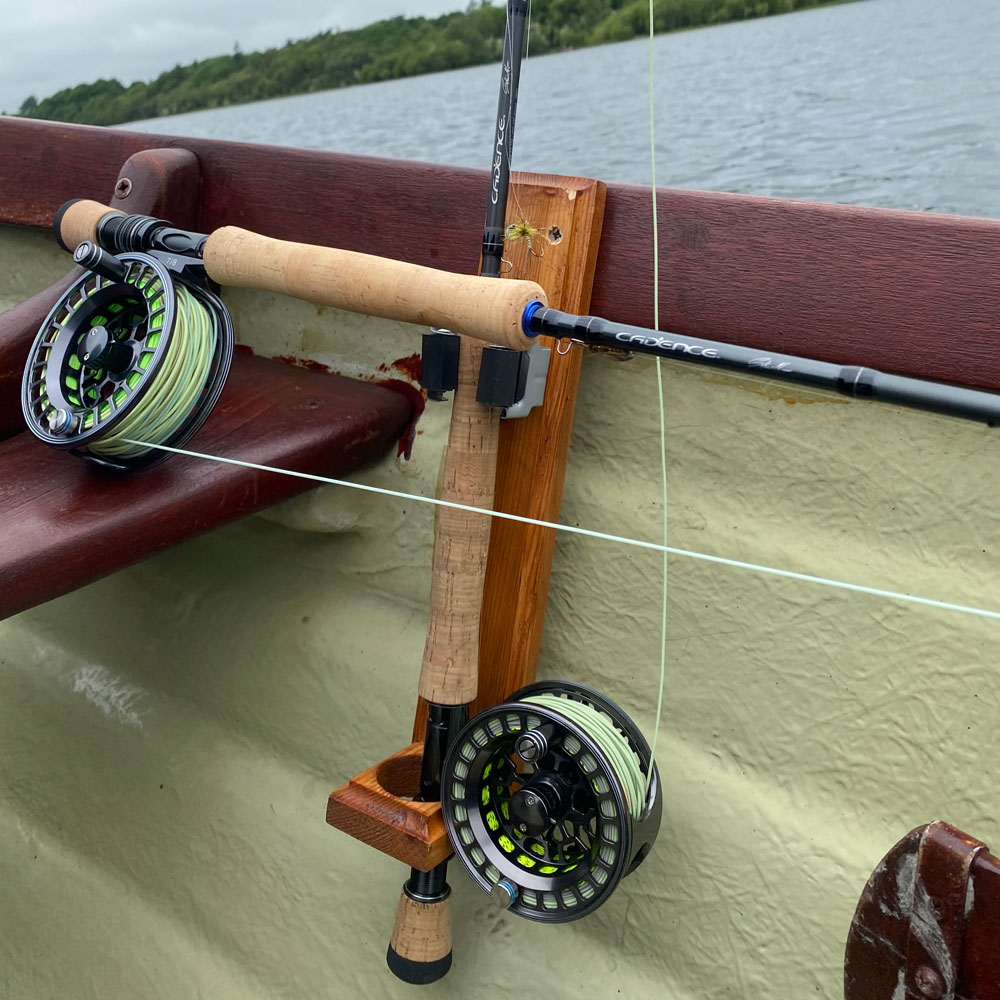
There are two types of dry fly fishing on loughs.
The calm stalking style is about stealth and good casts targeting rising fish. Trying to anticipate where the trout might rise next and presenting your fly to that spot is when a crisp, accurate rod like the Cadence CSM 9’ 6” #6 is a great weapon.
The other is the drifting style which can be done even in quite a large wave, and again we are scanning the water constantly looking for feeding fish. Remember to cover any rise you see, and there are many that we do not notice or barely. I have seen particularly good fish sip a fly, leaving the smallest of egg cup-sized dimples. I love an evening when the wind drops and slicks form. These slicks can last for miles and hold the spent and dying mayflies. These are formed by wind, which causes the water to circulate in tubes parallel to the wind direction. Adjacent tubes circulate in opposite directions. The glassy slicks are where the surface water is sinking between two rows of tubes. The sinking water collects bubbles, debris, and trout food like mayflies.
Surprisingly, slicks reduce the height of the surface waves. Trout feed up and down these natural windows and along the edges between calm and ripple, which is where I would focus as it is normally a hot spot. Many years ago, a wise lough angler told me to stay in a slick in the evening no matter how long. Eventually, you will find feeding trout and be able to cover a fish or two. This is a good tactic, as I am convinced that surface-feeding trout start to become boat shy. Sometimes, if the lough is busy, it pays to stay on a drift away from most of the other boats or areas that have seen a lot of boat traffic.
Nothing is better than finding fish feeding on spent, as this can bring some of the biggest trout to the surface. This fishing requires patience and stealth and can be the most exciting fishing of your life if you hit it right. There is nothing in fishing that will surpass watching big wild trout sucking down a fly in a slick, on a lough, as it comes feeding towards your fly. If you are lucky, it sucks down yours, and all hell breaks loose as you set the hook with a well-timed lift.
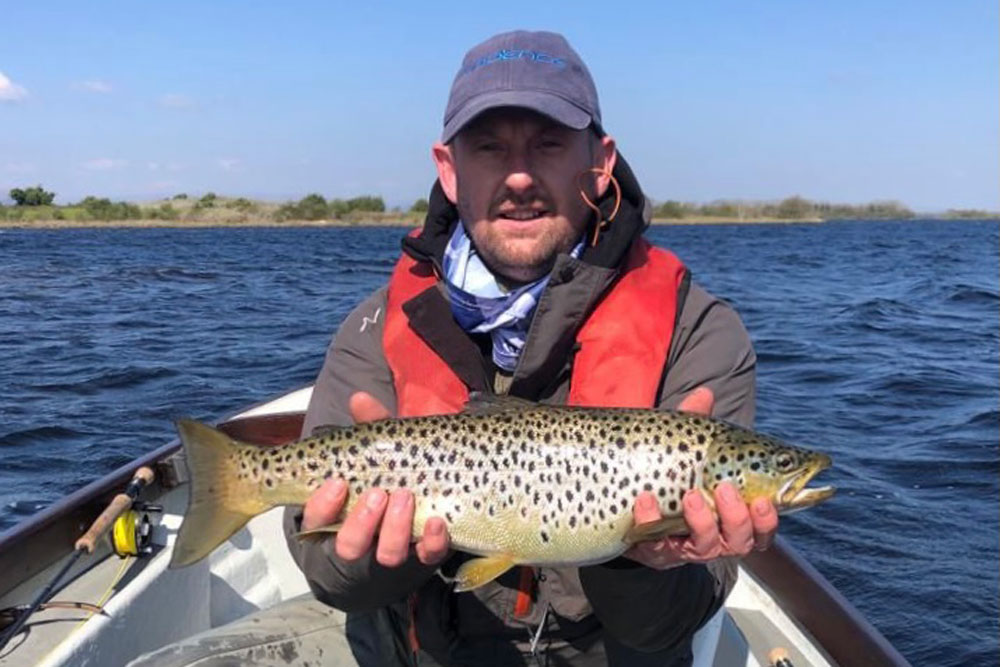
There is something magical about the mayfly. It reminds me of Tinkerbelle from J. M Barrie’s Peter Pan. Something is captivating in watching the spinners doing their mating dance above an island on a wild lough. Sometimes, it is like smoke rising from trees. Anglers and trout love the mayfly.
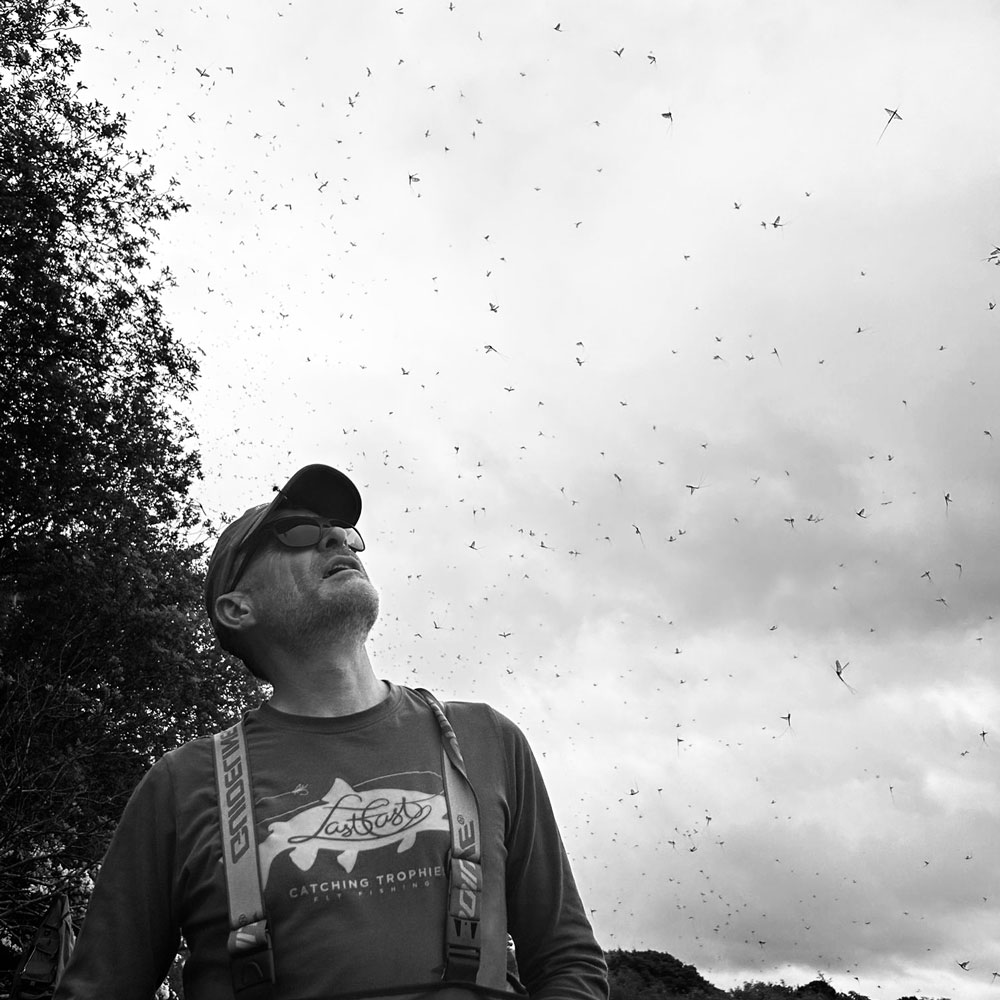
Many books will show you some great lough style patterns, Peter O’Reilly’s Flies of Ireland and E J Malone’s Irish Trout & Salmon Flies. I miss Ted and Peter, two men who lived for fly fishing. Also, Kingsmill Moore’s A Man May Fish is a classic, and Patsy Deery’s Irish Mayflies are all worth a read.
You should remember a few things while fishing in Ireland on her wild loughs. Irish loughs can be excessively big, rocky, and hazardous when swept by fierce winds. A boatman/guide is the best guarantor of safety, but every angler in a boat should always wear a life jacket. Anglers who go afloat without the aid of a boatman/guide should only do so with great care after taking local advice.
Get in touch with Stevie
Fly Casting Lessons – anglingclassics.com
Irish Fly Fair – irishflyfair.com

